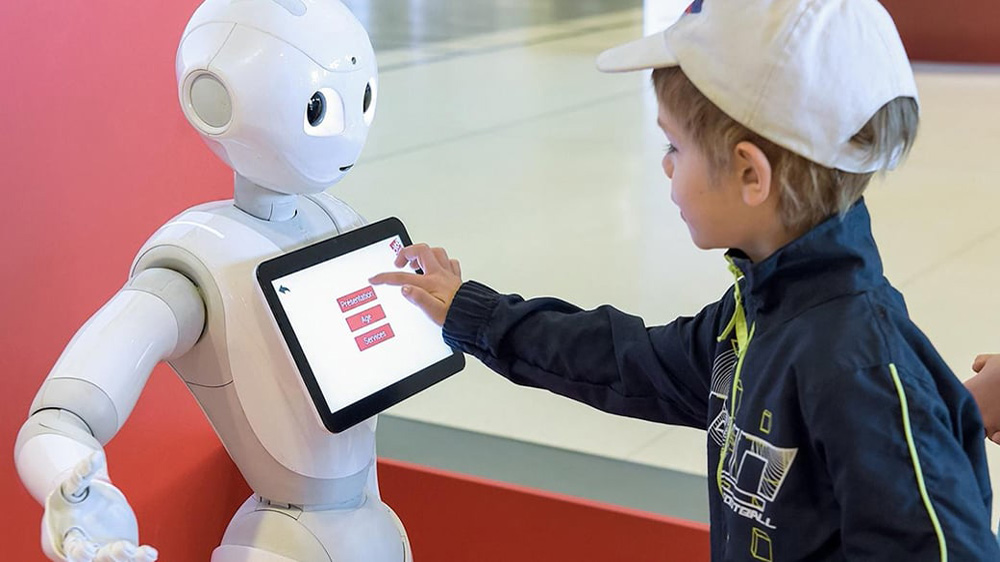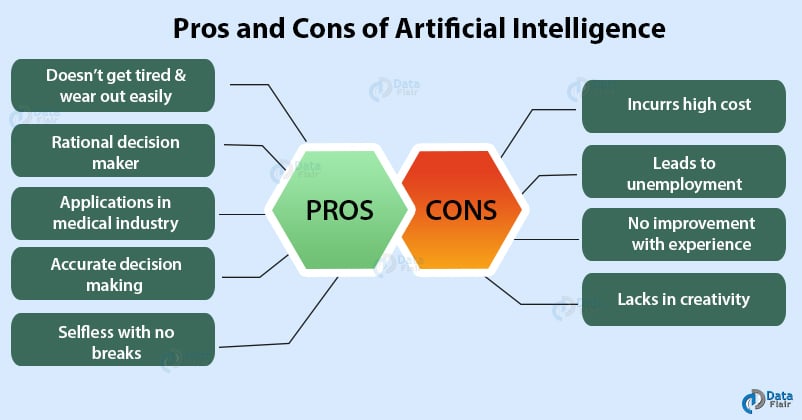Given the recent coronavirus pandemic the world is facing, there has been a sudden shift in teaching methods. More institutions are exploring open and distributed learning and are trying to incorporate it in their teaching processes. Due to this shift, there are various emerging technologies that will be widely used in education in the years to come. Artificial Intelligence (AI) is one of them. Artificial Intelligence has capabilities to mimic and develop on human intelligence, while performing functions that require innovating thinking and solving problems (Shabbir & Anwer, 2015). AI software are usually installed in robots, computers, machines, and other numerous systems. In the education sector, AI has started to gain recognition. It is estimated that the use of AI in education will grow by 47.5% in the United States by 2022 (R. & M., 2018).
Artificial Intelligence as an emerging technology is going to be analysed and reviewed, with the use of the SECTIONS model as a guide (A.w. & Tony, 2019).
Students:
While it is believed that physical presence of an educator is necessary in teaching, the integration of AI can enhance their teaching method and will tailor the education system to students’ needs. One of the main requirements to successful teaching is ensuring that student needs are met. According to A.w, & Bates, students demographics, access and differences in learning are the three main issues that need to be focused on (2019). With the use of AI, students from all across the world can receive access to educational platforms, without having to worry about time-difference and being physically present. It decreases the restrictions that one may face while receiving education. AI can be used to support the instructor while teaching new students and can also offer help and answers to common questions, without having to communicating with the professor and waiting for their response.
Ease of Use:
Another important factor to weigh in is the student’s ease of use. To be able to make the most of the lessons, students must be able to have basic computer literacy. If these pre-requisites are matched, AI can benefit students and teachers in a learning environment. AI is created to make tasks easier, rather than more complex. With basic computer knowledge, it is observed that one can comfortably use software that incorporate AI in them. Contrary to popular belief, AI can actually make learning processes easier for students. For example, managing a class of 50 students is challenging if the lessons need to be personalized according to every student’s needs. Currently, intelligent instruction design and digital platforms are developed using AI, that allows students to learn, test, and provide feedback for the software in use. With the use of AI, challenges faced by students can be identified, and help can be provided for the same. It is expected that AI will be used to understand students’ expressions during the lesson, to identify if the student is finding it difficult to cope with the content (Marr, 2018). Upon identifying the expression, the lesson will be modified to be suitable for the student with the use of AI. Not only does this improve students’ ease of use, but also the instructors teaching functions. It allows teachers to make changes to lessons upon feedback and also gives them more time to communicate with students outside of class, as most changes to the course is done through the AI software (Marr, 2018).
Costs:
Implementation costs of any new system can be high, similarly, implementing AI systems into a pre-existing educational environment will incur high costs. However, the benefits and returns are predicted to be higher than the cost of implementation, which makes AI systems worth it. In a report by McKinsey, it was found that AI has a profit margin of around 4-15% if invested in for a long-term project (Bughin et al., 2017). Given that the education sector is one of the most profitable businesses across the world, they have the resources to invest in AI systems, especially because of the guaranteed return rate.
Teaching & Media selection:
AI has a tremendous potential to grow with regards to teaching and media functions. AI systems can be used to provide a variety of multimedia such as narrations, graphics, pictures, videos, and personalized multimedia lessons catered to every student’s needs. With the instructor designing lesson content, AI can update and enhance the same lessons, ensuring that students can communicate with teachers to decide the most suitable plan.
Interactions:
AI systems could have a positive as well as a negative effect on student-teacher interactions. Since the AI system can conduct many of the instructor’s tasks, it provides the teacher with more free time, which can facilitate more student-teacher communications. However, at the same time, by allowing the AI system to perform certain tasks such as grading, feedback, etc., student-teacher interactions can significantly decrease as lesser students would ask for feedback from teachers.
Organizational issues:
In a learning environment, instructors have to face difficulties while managing a classroom filled with students. Not only do they need to teach, but instructors also have to grade papers, give out evaluations, fill different types of paperwork, and manage school trips. The tasks teachers are required to do are endless. In a study by OECD, it was found that teachers spend over 50% of their time on non-teaching activities (2015). With the use of AI, back office tasks could easily be managed, and activities such as grading papers, exams and essays, and personalized learning methods for each student could be accomplished. Additionally, routine paperwork, managing finances, and improving the comprehensive teaching method can all be achieved with the integration of AI in education. Furthermore, AI could also be used in higher level institutions for admission processes. AI systems can be designed to review and select records based on pre-requisites established and can also be a more accurate method of accepting students in universities. Biases will not occur, and students will receive a fair admission depending on certain criteria. Recent college admissions scandals have increased oversight and governance on admissions processes, and the use of machine learning systems to provide a more systematic way of handling admissions is proving to be fruitful (Schmelzer, 2019).
Networking:
Other than the education sector, AI has transformed networking. With its daily updating algorithms that take into consideration every button one “clicks”, AI has the ability to enhance networking across all platforms. When it comes to education, AI is a fairly new system that’s recently been introduced at a large scale. It is hard to predict how exactly it would affect the networking aspect of education. However, with its current presence in numerous networking sites such as Facebook, YouTube, Twitter, etc., AI will be used to help students connect with one another, and also facilitate discussions regarding the course content.
Security and Privacy:
As with other technologies, integration of AI poses just as big a security and privacy concern in the education field. Users should follow security measures like they would while using any other technology and try to maintain anonymity unless they can fully trust the tool they’re utilizing. Students may be more susceptible to hackers and may be vulnerable in certain situations. According to Levin, the Family Educational and Privacy Rights Act (FERPA) protects student’s information if they are under the age of 18 (2015). These laws should continue to be updated and established in institutions, especially when higher technologies such as AI is going to be used. If correct measures are taken, AI would be more beneficial rather than harmful.
Conclusion:
Through this review, it can be observed that there are more advantages rather than disadvantages of artificial intelligence in education. It is an emerging technology that has the potential to grow far more than its current position, in the next 10 years. As AI advances, there is significant evidence that supports its integration in education. While AI can enhance education, it is also important to acknowledge the need of instructors for teaching processes. AI will not replace humans but will rather serve as an “invaluable extension of the human expert, helping teachers to more effectively meet the diverse needs of many students simultaneously” (Marr, 2018).
References:
A.w., & Tony. (2019, October 10). Chapter 9: Choosing and using media in education: the SECTIONS model. Retrieved from https://pressbooks.bccampus.ca/teachinginadigitalagev2/part/9-pedagogical-differences-between-media/
Bughin, J., Hazan, E., Ramaswamy, S., Chui, M., Allas, Tera., Dahlstrom, R., Henke, N., Trench, M. (2017, June). McKinsey Global Institute – Artificial Intelligence the Next Digital Frontier? Retrieved from
Levin, D. (2015). Protecting K-12 Student Privacy in a Digital Age. Place of publication not identified: Distributed by ERIC Clearinghouse.
ltd, R. and M. (2018). Artificial Intelligence Market in the US Education Sector 2018-2022. Retrieved from https://www.researchandmarkets.com/reports/4613290/artificial-intelligence-market-in-the-us?utm_code=5lshzz&utm_medium=BW
Marr, B. (2018, July 25). How Is AI Used In Education — Real World Examples Of Today And A Peek Into The Future. Retrieved from https://www.forbes.com/sites/bernardmarr/2018/07/25/how-is-ai-used-in-education-real-world-examples-of-today-and-a-peek-into-the-future/#550475d6586e
OECD. (2015, February). Education Indicators in Focus. Retrieved from
Schmelzer, R. (2019, July 17). AI Applications In Education. Retrieved from https://www.forbes.com/sites/cognitiveworld/2019/07/12/ai-applications-in-education/#354b3f6262a3
Shabbir, J. & Anwer, T. (2015, August). Artificial Intelligence and its Role in Near Future. Retrieved from https://arxiv.org/pdf/1804.01396.pdf




Leave a Reply